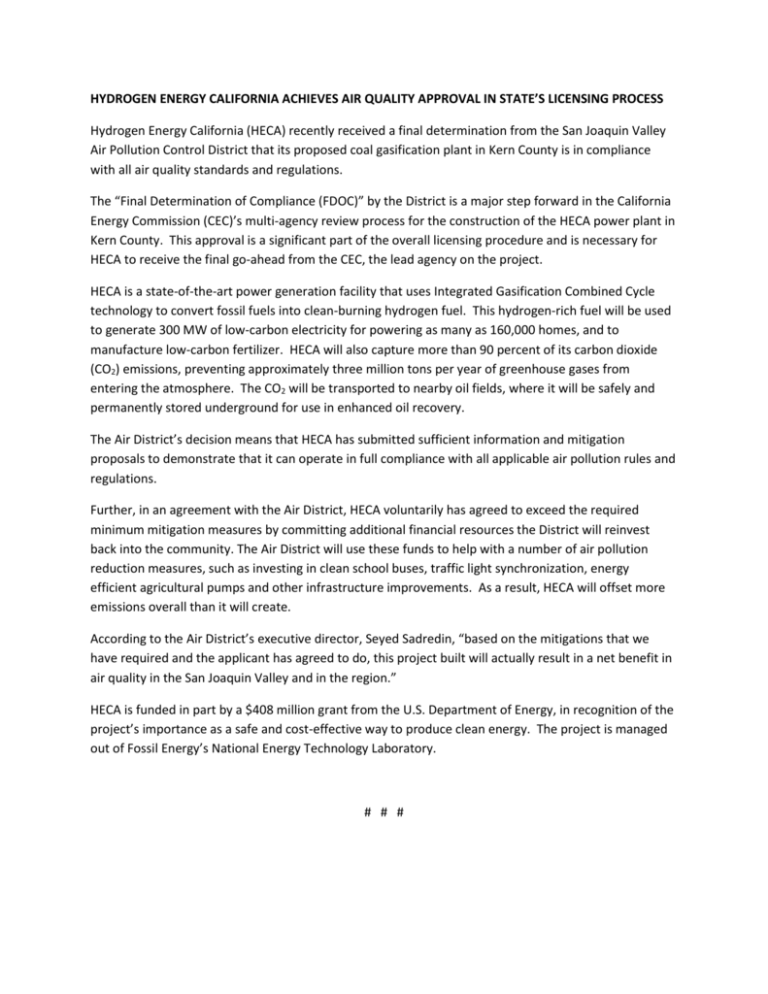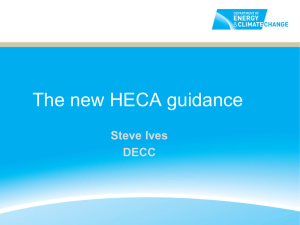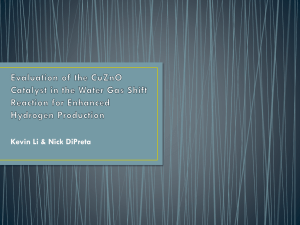Website-Article_SJV-Air-District-FDOC_FINAL_07-29
advertisement

HYDROGEN ENERGY CALIFORNIA ACHIEVES AIR QUALITY APPROVAL IN STATE’S LICENSING PROCESS Hydrogen Energy California (HECA) recently received a final determination from the San Joaquin Valley Air Pollution Control District that its proposed coal gasification plant in Kern County is in compliance with all air quality standards and regulations. The “Final Determination of Compliance (FDOC)” by the District is a major step forward in the California Energy Commission (CEC)’s multi-agency review process for the construction of the HECA power plant in Kern County. This approval is a significant part of the overall licensing procedure and is necessary for HECA to receive the final go-ahead from the CEC, the lead agency on the project. HECA is a state-of-the-art power generation facility that uses Integrated Gasification Combined Cycle technology to convert fossil fuels into clean-burning hydrogen fuel. This hydrogen-rich fuel will be used to generate 300 MW of low-carbon electricity for powering as many as 160,000 homes, and to manufacture low-carbon fertilizer. HECA will also capture more than 90 percent of its carbon dioxide (CO2) emissions, preventing approximately three million tons per year of greenhouse gases from entering the atmosphere. The CO2 will be transported to nearby oil fields, where it will be safely and permanently stored underground for use in enhanced oil recovery. The Air District’s decision means that HECA has submitted sufficient information and mitigation proposals to demonstrate that it can operate in full compliance with all applicable air pollution rules and regulations. Further, in an agreement with the Air District, HECA voluntarily has agreed to exceed the required minimum mitigation measures by committing additional financial resources the District will reinvest back into the community. The Air District will use these funds to help with a number of air pollution reduction measures, such as investing in clean school buses, traffic light synchronization, energy efficient agricultural pumps and other infrastructure improvements. As a result, HECA will offset more emissions overall than it will create. According to the Air District’s executive director, Seyed Sadredin, “based on the mitigations that we have required and the applicant has agreed to do, this project built will actually result in a net benefit in air quality in the San Joaquin Valley and in the region.” HECA is funded in part by a $408 million grant from the U.S. Department of Energy, in recognition of the project’s importance as a safe and cost-effective way to produce clean energy. The project is managed out of Fossil Energy’s National Energy Technology Laboratory. # # #






